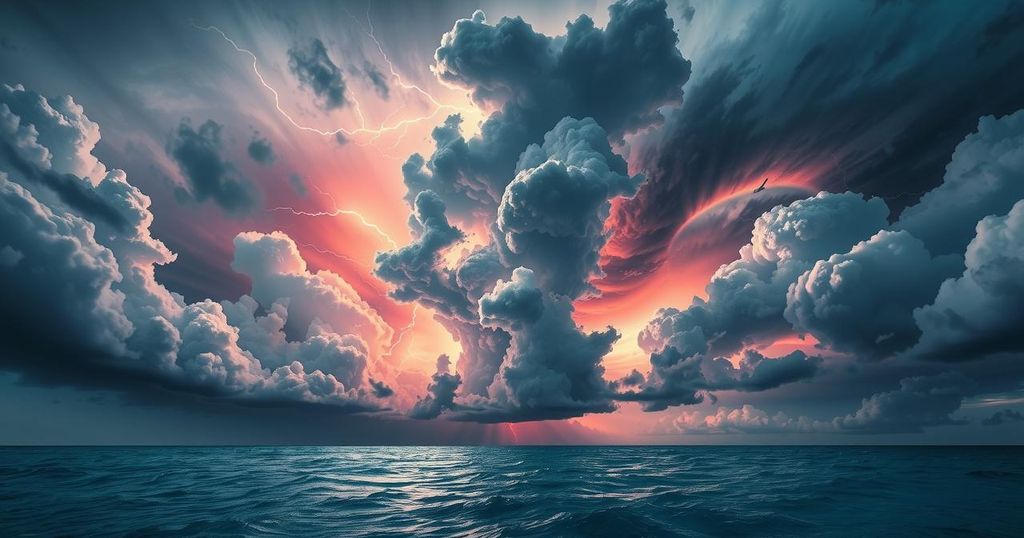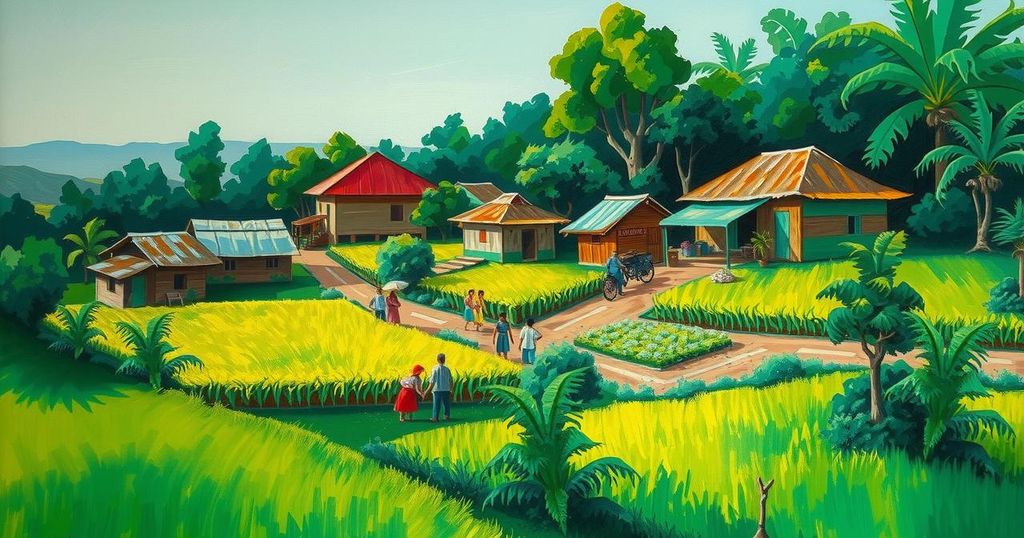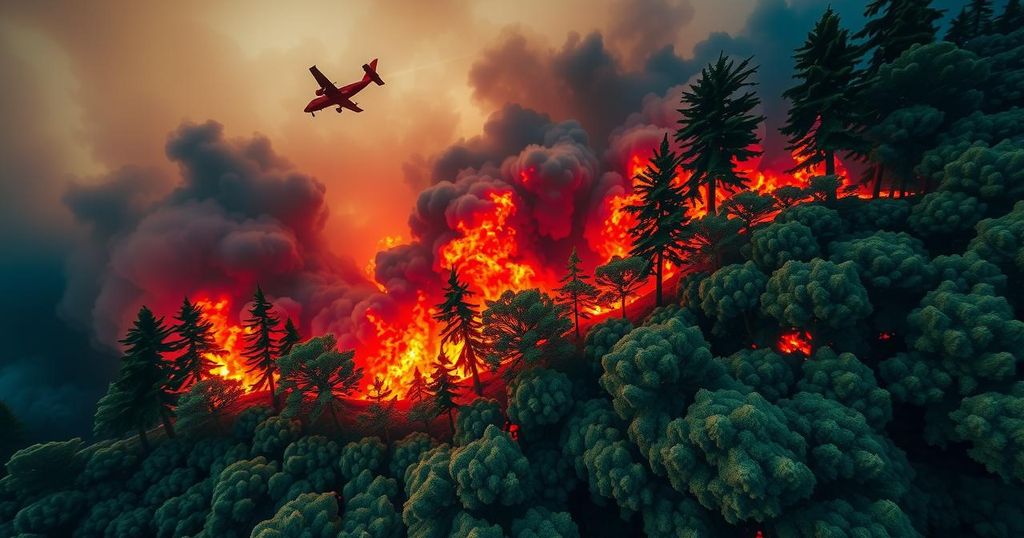Six Tropical Storms Simultaneously Impact Southern Hemisphere
Yesterday, six tropical storms were observed in the Southern Hemisphere, including cyclones in both the South Pacific and Indian Oceans. Critical storms such as Cyclone Honde are expected to impact areas like southern Madagascar and Reunion Island. Elevated storm activity can be attributed to La Niña, resulting in historically high cyclone energy levels this season.
Yesterday, six tropical storms were reported simultaneously in the Southern Hemisphere. This rare occurrence included three tropical cyclones in the South Pacific and three additional cyclones in the Indian Ocean, marking a significant climatic event not seen since 1989. The current tropical season in this region spans from November to April.
The cyclones observed include Tropical Cyclone Honde off Mozambique’s coast, Cyclone Garance near Madagascar, Hurricane Bianca west of Australia, Hurricane Alfred northeast of Australia, and Cyclones Seru and Rae north of New Zealand. Factors contributing to this unusual number of storms include low wind shear and elevated sea-surface temperatures, largely influenced by La Niña conditions, as noted by AccuWeather’s Lead International Expert Jason Nicholls.
On Tuesday, the last advisory for Cyclone Rae was issued, coinciding with the formation of Cyclone Honde. Cyclone Rae caused havoc in Fiji, highlighting the destructiveness of these storms. In contrast, the last notable instance of simultaneous cyclones in the South Pacific occurred in January 1999 with storms Dani, Olinda, and Pete, while a near-occurrence in January 2021 fell short due to naming and basin definition discrepancies.
So far, the current tropical season has produced 22 tropical depressions and cyclones. The Cyclone Energy accumulated since February 12 shows a significant increase, currently at 166.3, which represents 130 percent of the historical average for this point in the season.
Tropical Cyclone Honde is predicted to affect southern Madagascar this week, bringing heavy rainfall of 12 to 24 inches, with localized amounts potentially reaching 48 inches, and wind gusts up to 100 mph along the southern coastline.
Cyclone Garance, poised to approach Reunion Island as a hurricane, may deliver substantial rainfall and strong winds, particularly later this week. The last hurricane to directly impact Reunion was Cyclone Firinga in 1989, underscoring the rarity of such storms in that region.
Hurricane Alfred, which developed in the Coral Sea, is intensifying while heading south, yet it is expected to remain east of Australia. Nonetheless, its outer bands may still bring rainfall to Queensland and New South Wales early next week.
In summary, six tropical storms notably occurred in the Southern Hemisphere, a rare meteorological event not seen since 1989. With current conditions attributed to La Niña, cyclones Honde and Garance pose significant weather threats, particularly in Madagascar and Reunion Island. Overall, this season has seen an elevated number of storm incidents compared to historical averages, impacting local regions dramatically.
Original Source: www.accuweather.com




Post Comment